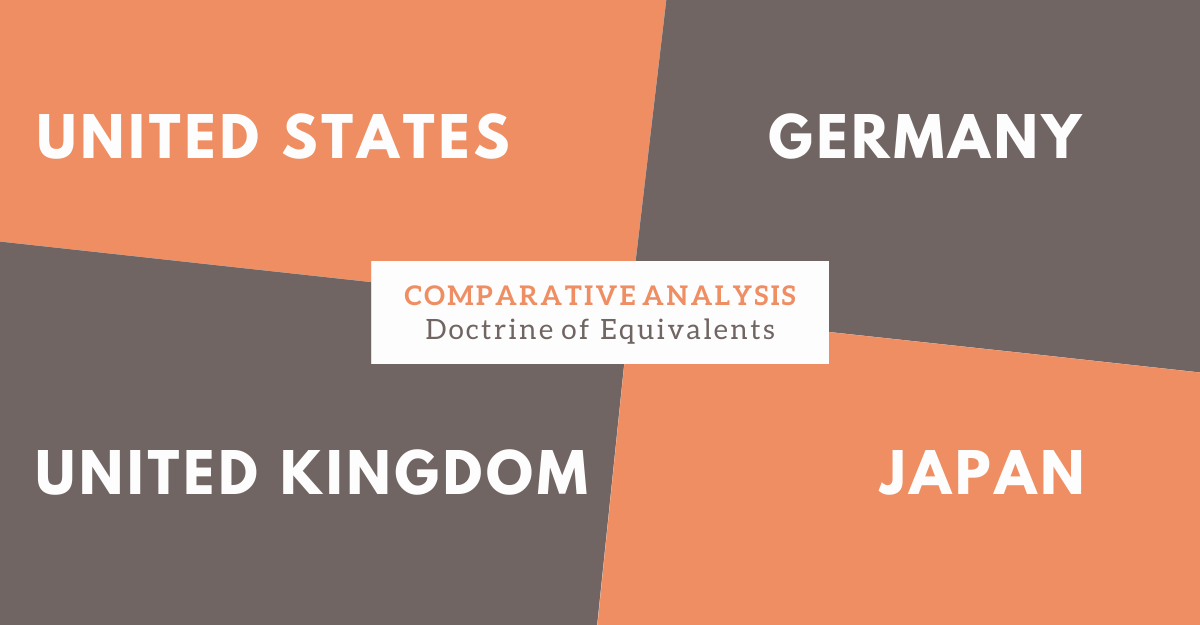Patents grant exclusive rights to the inventor to manufacture, market, or use the design, process, or product. This form of intellectual property protects and recognizes the rights of the patent holder. Sometimes, any other person (i.e., a third-party) may make use of the invention without the permission of the inventor. This is a patent infringement.
In such cases, the parties settle the disputes at the court. The court considers a case as a patent infringement based on the infringement of claims mentioned in the concerned patent. But judgment based only on the infringement of patent claims may not be accurate in many cases. This is because a patent infringement may not be a complete and direct imitation of the patent claims.
A third party may modify and make minor changes to the claims but achieve the same result or end product as of the patented invention. This will not be fair to the original inventor. Countries use the Doctrine of Equivalents to overcome such indirect infringements of patents.
Let us look into how different countries handle the Doctrine of Equivalents.
The US
The US court has set specific parameters to consider patent infringement under the Doctrine of Equivalents. Meanwhile, the patent holder has to determine equivalency under the suitable parameter to have the right outcome.
Triple identity test: The third party may involve in the same functions and obtain the same result in a methodology similar to the patent. In such cases, the patent holder can call for this doctrine. We can identify patent infringement of mechanical inventions through this test.
Test of insubstantial differences: The court can consider the analysis of insubstantial differences when there is not much difference in the process and result of the third party from that of the patent holder.
All elements test: In this process, the court looks for equivalents in every single claim of the patent. Hence, the inventor should prove that the third party’s process or product is similar or has equivalence to his patent claim.
Germany
The German Supreme court has set certain principles to determine the Doctrine of Equivalents. They are as follows:
Equal effect: Sometimes, the third party may achieve a solution to the problem similar to every solution offered in the claims of the patented invention. This is the principle of equal effect.
Obviousness: A skilled person may often be capable of finding the similarities in the third party’s modified method at the priority date (date of patent application). Moreover, if the modified process of the third party doesn’t involve any inventive step, then it becomes eligible for invoking the doctrine.
Equal value: The third party uses a modified process, or design to get a similar outcome. Sometimes, a skilled person may identify how the third party has changed its products based on or close enough to the approach taken to device the patent claims. Then the court can consider infringement under the principle of equal value.
The UK
The jury in the UK did not provide any specific principles for Doctrine of Equivalents for a long time. However, the court addressed this in the Actavis UK Limited v. Eli Lilly & Company case. Accordingly, the court will ask the following questions to determine if there is patent infringement:
– Does the third party (i.e., variant) follow a similar method or concept of invention and gain the ‘same result’ as mentioned in the patent?
– Can a skilled person identify that the third party has adopted a similar method and achieved the same result of the patented invention?
– Moreover, on reading the patent, can the skilled person conclude that to make the desired invention, is it required that the inventor had to stick strictly to the literal meaning of the patent claims?
The patent holder must prove the answers to the question as yes, yes, and no, respectively. This will establish there was an indirect patent infringement. This judgment from the UK jury has created a better understanding of patent infringement. It has sowed the seed for a robust doctrine of equivalent principles in the future.
Japan
The Supreme court established five requirements for patent infringement in the doctrine of equivalents in the Ball Spline Bearing case. They are as follows:
Non-essential requirement: The essential part of a patent is the unique idea of the invention that is unavailable in the prior art. Hence, if the third party’s method uses the essential part of the invention, then there is infringement.
Interchangeability: The third party’s modified method may produce the same result. Moreover, it may solve the same problem that the patented invention solves. If we can easily interchange them to achieve the same effect, then there is patent infringement.
The conceivability of the interchange: Furthermore, a person skilled in the same field should readily recognize that the third party has modified their methods based on the patented invention.
Public domain: At the time of the patent application, the third party’s methods or products should have been unknown or non-obvious.
Special circumstances: There is no enough evidence to show that the patent holder has intentionally excluded the third party’s product or method in their patent claim.
| Characteristics | US | Germany | UK | Japan |
| The third-party has the same result as the patent | Triple identity | Equal effect | The question of the same result | Interchangeability |
| Obviousness of infringement | Obviousness-at time of infringement | Obviousness-at time of patent application | Question of obviousness-at time of patent application | The conceivability of the interchange- at time of infringement |
| Other additional requirements | insubstantial differences | Equal value | Question on the essential requirement | Non-essential requirement |
| When the third party infringes a disclosed but unclaimed element | Will not fall under Doctrine of Equivalents-there is no patent infringement | Will not fall under Doctrine of Equivalents-there is no patent infringement | Considered as patentee intends to limit the protection scope | Will not fall under Doctrine of Equivalents-there is no patent infringement |
We can clearly see that countries are trying their best to protect the rights of the patent holder irrespective of their jurisdictions. Besides, the Doctrine of Equivalents acts as an additional security blanket to prevent patent infringements. Hence, inventors should make the best use of IP rights to safeguard their inventions.




